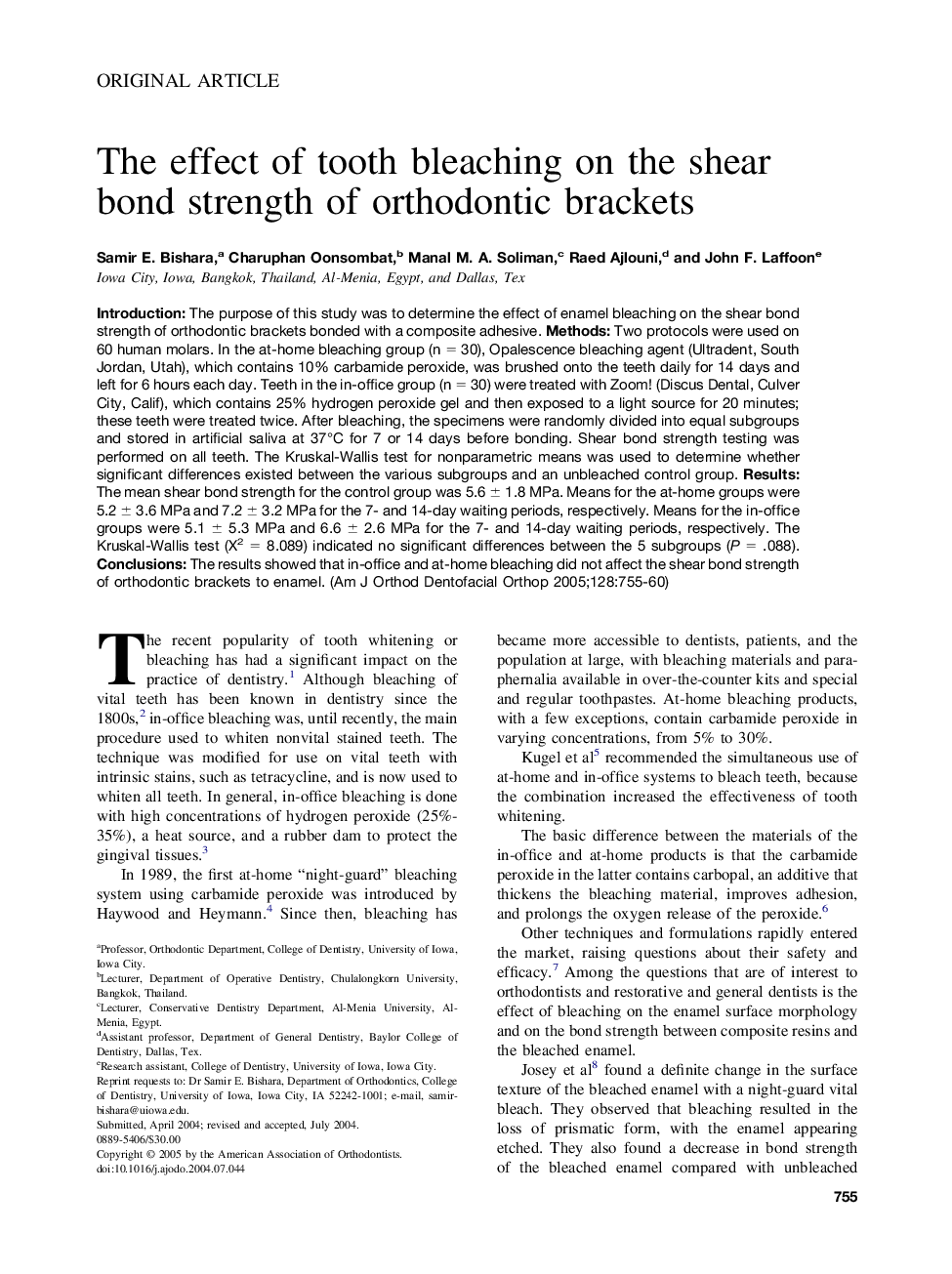| Article ID | Journal | Published Year | Pages | File Type |
|---|---|---|---|---|
| 9992504 | American Journal of Orthodontics and Dentofacial Orthopedics | 2005 | 6 Pages |
Abstract
Introduction: The purpose of this study was to determine the effect of enamel bleaching on the shear bond strength of orthodontic brackets bonded with a composite adhesive. Methods: Two protocols were used on 60 human molars. In the at-home bleaching group (n = 30), Opalescence bleaching agent (Ultradent, South Jordan, Utah), which contains 10% carbamide peroxide, was brushed onto the teeth daily for 14 days and left for 6 hours each day. Teeth in the in-office group (n = 30) were treated with Zoom! (Discus Dental, Culver City, Calif), which contains 25% hydrogen peroxide gel and then exposed to a light source for 20 minutes; these teeth were treated twice. After bleaching, the specimens were randomly divided into equal subgroups and stored in artificial saliva at 37°C for 7 or 14 days before bonding. Shear bond strength testing was performed on all teeth. The Kruskal-Wallis test for nonparametric means was used to determine whether significant differences existed between the various subgroups and an unbleached control group. Results: The mean shear bond strength for the control group was 5.6 ± 1.8 MPa. Means for the at-home groups were 5.2 ± 3.6 MPa and 7.2 ± 3.2 MPa for the 7- and 14-day waiting periods, respectively. Means for the in-office groups were 5.1 ± 5.3 MPa and 6.6 ± 2.6 MPa for the 7- and 14-day waiting periods, respectively. The Kruskal-Wallis test (X2 = 8.089) indicated no significant differences between the 5 subgroups (P = .088). Conclusions: The results showed that in-office and at-home bleaching did not affect the shear bond strength of orthodontic brackets to enamel.
Related Topics
Health Sciences
Medicine and Dentistry
Dentistry, Oral Surgery and Medicine
Authors
Samir E. Bishara, Charuphan Oonsombat, Manal M.A. Soliman, Raed Ajlouni, John F. Laffoon,
